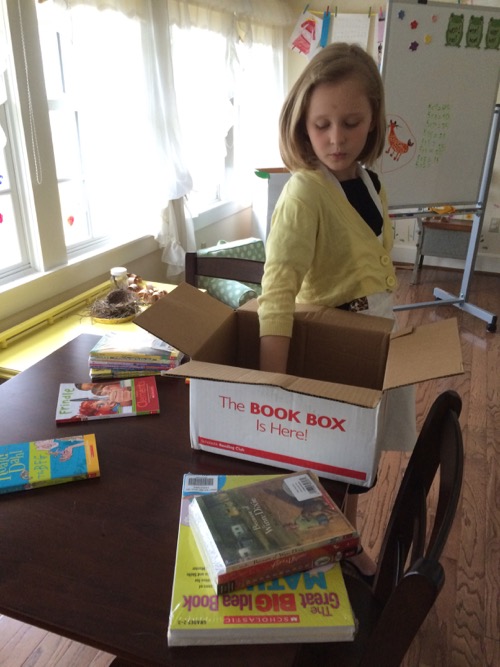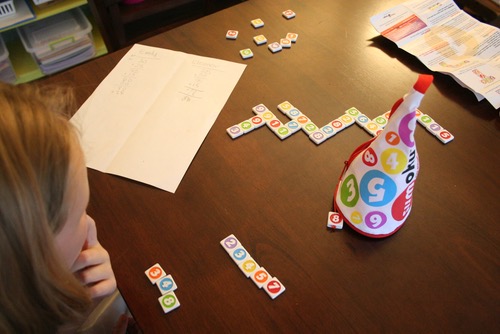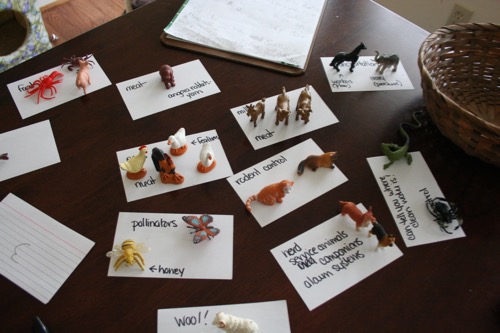Ellie is a HUGE fan of math. This makes perfect sense to me: Math is cool. Oak Meadow Grade 2 is purposefully flexible about how much and how complicated math practice can be – the idea is to tailor the experience to the student’s needs/development/attentiveness. There is also lots of ‘mental’ math encouragement. Our mental math practice tends to be everyday math: Do I have enough cash to buy bread AND a Snickers? How many cookies can I have if I have to share? If I double this recipe, is there enough peanut butter for lunch tomorrow? Funny how most of my everyday math has to do with snacks. The Big Concepts we’ve covered in Oak Meadow Grade 2 are a super-thorough understanding of place value (you can’t get far without it), carrying/borrowing (‘regrouping’ if you’re younger than I am), and learning multiplication tables up to 12.
Oh, those crazy multiplication tables. Ellie’s true math love is problem solving, not repetition and memorization. Flash cards and chanting x tables are a quick trip to Crazy Town with bonus gnashing of teeth. Besides, she’s got all of third grade and the first bit of fourth grade to really, truly internalize the multiplication tables before getting to long division. I would MUCH rather have her really, truly internalize multiplication tables instead of *memorize and then forget repeat from * to end of row. So here’s what we’re doing:
I got the idea (and the handprint printables) here – but it occurred to me that the big, precut shapes from the Dollar Store (in the school section) would have been cheaper and easier. I picked some up for when I run out of the hand prints. As Ellie learns a fact, I take it off of the wall. When there are no more facts on the wall, we eat ice cream and add a new set of facts. I only put up the ones she doesn’t know. Because of the commutative property of multiplication (look at me showing off!) 3×4=12 appears in x3 and x4, but there’s no reason to learn it twice. The non-aggressive repetition is ideal.
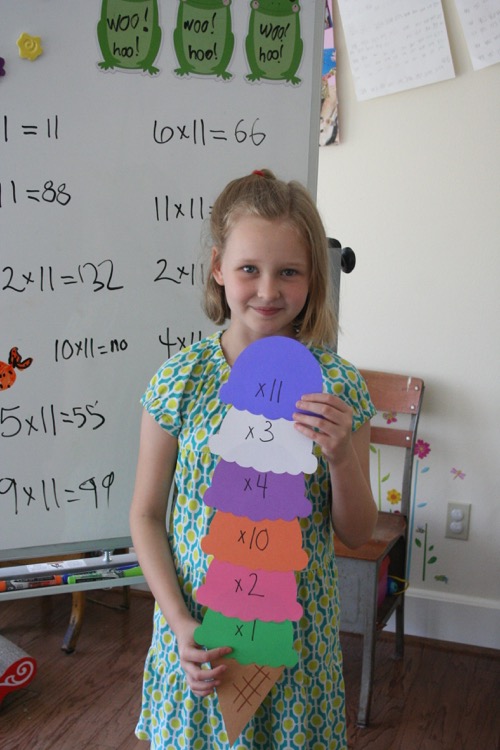
She only had to learn two facts for x11, but a scoop is a scoop is a scoop.
When people love something (chocolate, yarn, stuffed animals) it’s hard for them to get enough. Which is why we also have “recreational” math in the form of Life of Fred.
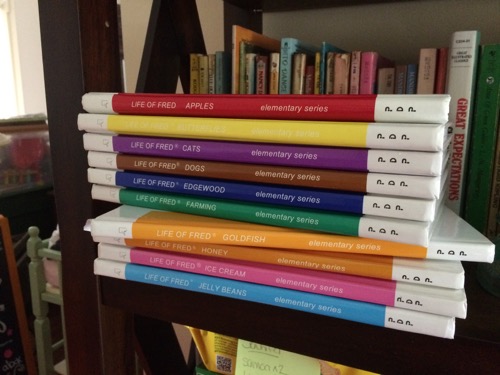
These are the 10 books in the Elementary Series. Life of Fred goes all the way to Calculus.
The main character, Fred Gauss, is a five year old math professor at KITTENS University. Seriously. He has a doll named Kingie. Kingie is a prolific (and profitable) artist. Just a few chapters ago Fred also acquired a goldfish named Fish. Ellie successfully calculated the volume of Fish’s new tank. Fred’s narrative has taught Ellie: carrying, borrowing, ordinal numbers, telling time, prepositions, adjectives, geometry, area, volume, cardinality of sets, and is working on her multiplication. There’s more, that’s just all I can think of right now. Ellie begs for more Fred. BEGS.
To sum up
(hahah I am SO FUNNY)
Math = Good
More Math = Better

